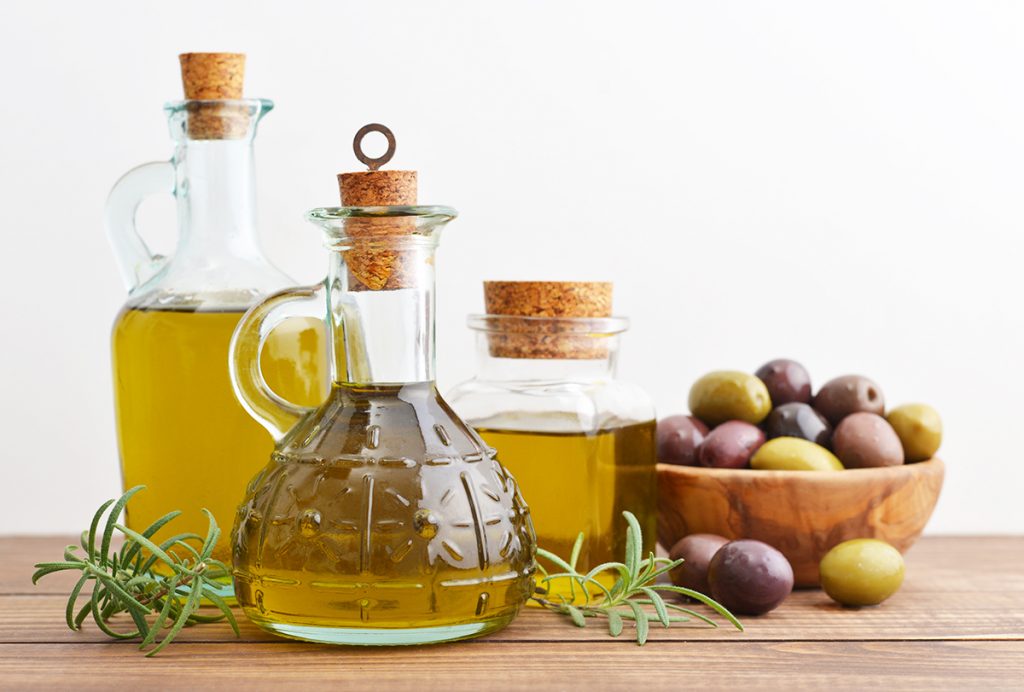By João Flávio da Silveira Petruci
Among the edible oils, olive oil is a worldwide appreciated food product with high nutritional value and an essential diet component in many cultures, especially in the Mediterranean. Your chemical composition is basically constituted of unsaturated fats and of non-saponifiable constituents, such as sterols, tocopherols, and color compounds. Virgin olive oil is initially obtained as a juice from fresh and healthy olive fruits, followed by oil extraction from the fruits’ pit and pulp via decantation, purification, and filtration processes. As you will see, the exceptional chemistry of olive oil is much further than the majority of the oil composition or the production steps. What makes olive oil different is its pleasant aroma, which can be additionally used as important criterion to distinguish olive oils with poor and superior quality. Chemically speaking, the smell of an oil – or a liquid substance – is due to its volatile composition. Volatiles are the group of chemical elements and chemical compounds that can be readily vaporized. The volatile fraction of olive oils is composed of a broad range of low molecular weight substances (i.e. less than 300 Da) vaporized at room temperature, which is crucial to determine the quality of olive oil even whether the chemicals are present as major or minor components. Smelling fruit notes are usually produced during the fruit ripening stage; however, in the oil they are formed or accentuated both through the action of enzymes released when the fruit is crushed and during malaxation. Aldehydes, carboxylic acids, alcohols, esters, hydrocarbons, ketones, furans and other substances not yet identified are responsible for the olive oil aroma. The composition of the volatile fraction of olive oils are so important that can also indicate the geographical origin of the olive oil.

Besides, the “smelling” of oil volatiles can be used for other purposes. For instance, light and temperature-induced oxidation of triglycerides and their lipid derivatives causes changes in the volatile composition. As a consequence, the oxidative rancidity of oils can be detected even in the early stage through the identification of specific biomarkers or volatile fingerprint. It leads us to the next question: how to detect specific volatile chemicals or the volatile composition of olive oils? The scientific field that enables the identification and quantification of substances is the analytical chemistry. Here, scientists have developed a variety of methods to detect the smell of olive oils using low-cost, versatile, creative and accurate methods.
One of the most used approaches relies on the usage of electronic noses (e-Noses), which is comprised of an integrated array of sensor elements based on the mammalians olfactive system in which the non-specificity of the interaction between the volatile molecules is used to produce a unique odor profile – the so-called fingerprint – of each sample by data pattern recognition. Translating: each sensor element contained in the array will be sensitive to different chemical compounds – in the similar way of our olfactive nerves – generating electrical signals which will be later transduced by a computer. In our case, our brain does the job! By using an appropriate set of sensors, an electronic nose system can distinguish simple or complex odors. In a similar approach, the optoelectronic nose concept is derived, in which the cross-responsive sensor elements are comprised of chemoresponsive dyes responsible for changing the color of an array of chemical dyes resulting from chemical interactions between the volatile compounds and the chromophore through strong (i.e. bond formation via Lewis donor/acceptor) or weak (e.g. van der Waals) inter-molecular interactions. The colorimetric sensor array is prepared by impregnating a solid substrate (e.g. polymeric membranes) with the dyes via manual deposition or printing, enabling their immobilization and exposure to the volatile compounds of the sample.

Finally, it is important to note that the volatile composition can be used in a variety of applications in the food industry. Actually, it has been used for a long time, as we all sniff the food before consumption to verify the quality, feel the pleasant aroma, or check if it is already prepared. The chemistry of volatiles is beautiful and it is usually related to what chemistry is about: transformation. Depending on the pathways, many different volatiles can be produced with new organoleptic proprieties. In the analytical chemistry field, the development of new techniques to enable volatile detection is an essential demand. It can be used for food protection, smart packing, identification of adulteration, and other infinite possibilities.

JOÃO FLÁVIO DA SILVEIRA PETRUCI
OrcID: https://orcid.org/0000-0003-1121-2503
ResearcherID: http://www.researcherid.com/rid/L-2663-2013
Google Scholar ID:
https://scholar.google.com.br/citations?user=I8teSRMAAAAJ&hl=en
e-mail: jfpetruci@ufu.br


[…] See all at: https://www.ciencia-e-vinho.com/2021/04/14/the-smell-of-the-mediterranean/ […]